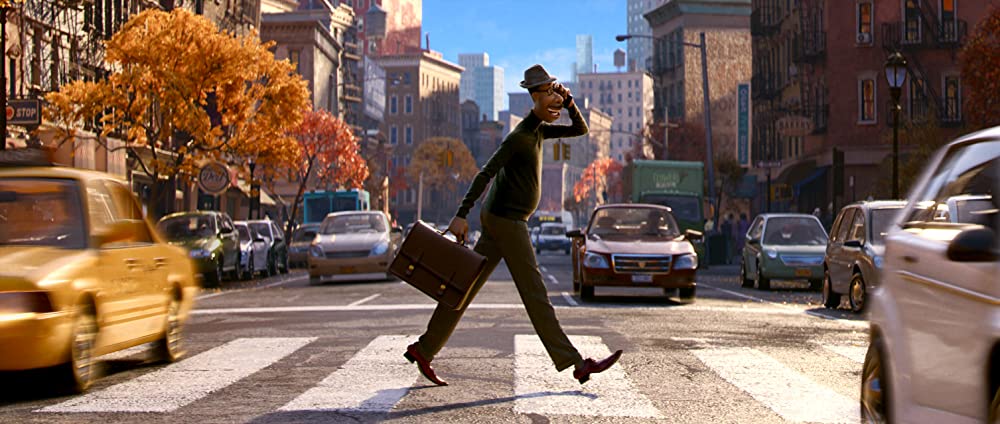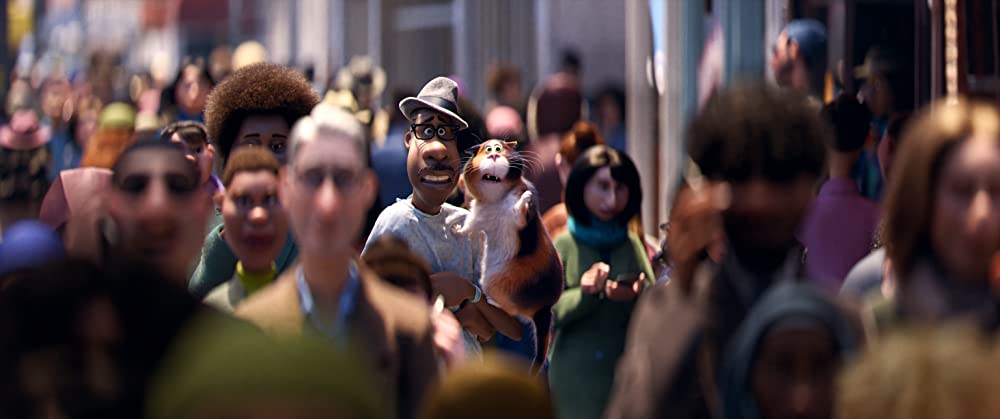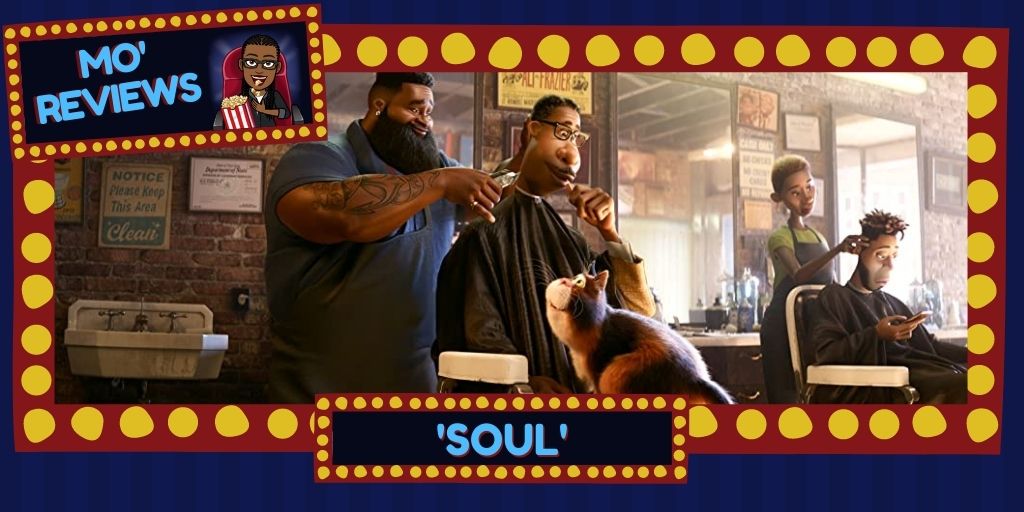Photo credit: Disney/Pixar
Directed by: Pete Docter, Kemp Powers
Written by: Pete Docter, Mike Jones, Kemp Powers
Starring: Jamie Foxx, Tina Fey, Phylicia Rashad, Angela Bassett, Graham Norton, Rachel House, Alice Braga, Richard Ayoade, Donnell Rawlings, Questlove
Synopsis (IMDb): Joe is a middle-school band teacher whose life hasn’t quite gone the way he expected. His true passion is jazz — and he’s good. But when he travels to another realm to help someone find their passion, he soon discovers what it means to have soul.

Monique’s Review:
Let’s get the positive out of the way first. Soul is a technical marvel. Pixar has long set the standard for 3D animation, and they have effectively pushed the bar even further with this film. The film’s focus on realism makes Pixar’s other examples of animating human beings pale in comparison. Similarly, Soul‘s interest in expanding the process of animating abstract thought goes beyond what most animation studios are doing right now, with a massive exception for Sony Animation and the ground they broke with Spider-Man: Into the Spider-Verse.
But that’s where my positives stop for Soul. Technically, it’s a masterclass in stretching the boundaries of animation. But storywise, it’s frustrating.
A story about a man learning to live fully and see the forest instead of the trees is universal. Yet, Soul takes the most convoluted path to tell that story. Even worse, they fall into tired pitfalls several animated films, including Disney’s films, have when relating a story of a Black character.
Last year, I wrote about how Soul‘s trailer annoyed me because, once again, we saw a Black character get transformed into something else. Once again, Black audiences would have to deal with seeing a Black character not experience life through their body. In a year in which more attention has been paid to Black death than ever before, Soul‘s adherence to yet another unnecessary Black out-of-body experience becomes even more tonally dissonant than it was before.
Indeed, it’s this idea of Black characters not having agency over their own lives that undermines Soul‘s message of living life to the fullest. Joe Gardner (Jamie Foxx) is trying to live with agency in the first minutes of the film. He steps up to the plate of convincing jazz bandleader and saxophonist Dorothea (Angela Bassett) to let him try out for a spot in her group and succeeds. He is in the process of reconciling the fact that he can’t live off of dreams alone, as his mother, Libba (Phylicia Rashad) keeps reminding him. Then he nearly dies, pushing him into a narrative that leaves him a near-perpetual victim of circumstance.
Meanwhile, the person with the most agency in the film is 22 (Tina Fey), a soul not interested in living. However, through more wild circumstances, 22 inhabits Joe’s body, and Joe inhabits the body of a cat. Joe has to be a passive participant in his own story while 22 masquerades as him and arguably lives better than him. But isn’t this Joe’s story?
I understand that Soul is as much 22’s journey as it is Joe’s. It makes sense that she would teach him about life as much as he would teach her. But the story might seem more original if we hadn’t seen Black people being divorced from their bodies before. People of color in general face this trope more often than their white counterparts.
This trend leads me to assume that many of the people behind animation either don’t see Black people and other POC as humans they can relate to or are so afraid of making a misstep that they’d instead utilize different methods to handle–and avoid–race. Tiana changed into a frog in The Princess and the Frog. In Spies Like Me, Lance got turned into a pigeon. Kuzco changed into a llama in The Emperor’s New Groove. Kunai changed into a bear in Brother Bear. Now Joe has become both a spirit and a cat in Soul. Why is it more comfortable for white animators to relate to frogs, bears, and souls than humans? Make it make sense.
In Soul, the film would instead go to the most extreme of esoteric lengths to find commonality with a Black character than to show us this Black man living his life and learning his lessons without losing his body. Black characters often have their agency removed in stories, to the point where it has become a joke in film circles (“the Black man dies first,” anyone?). It’s time for these stories to be over. Joe could have learned everything he learns in this film and keep his sense of self and agency intact. He could have even come into contact with 22, but he didn’t have to become a cat after losing his body.

Soul is, however, the first of its kind for Pixar–a damning statement, to be sure, but a sign of changing times for the predominately white studio. But there were glimmers of hope within Soul; Black animators and programmers, like Cheyenne Chapel and co-director/co-writer Kemp Powers, worked on the film. Seeing these people gives young Black animation lovers inspiration to follow in these pioneers’ footsteps. The film itself–and the fans it’ll gain–will also give Pixar and other animation studios more confidence to make films starring Black characters and other characters of color. So, Soul gives Pixar some solid ground to explore more Black and POC narratives even with its issues. I hope Pixar jumps on the opportunity.
